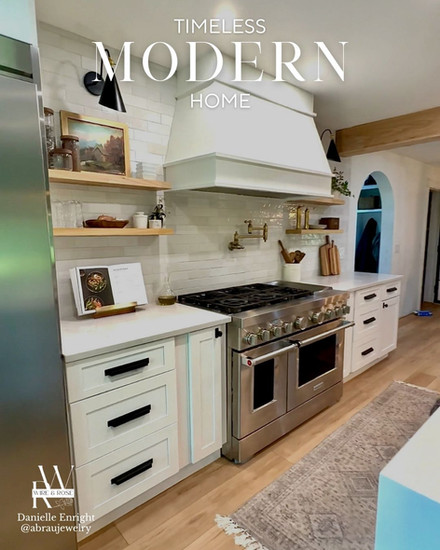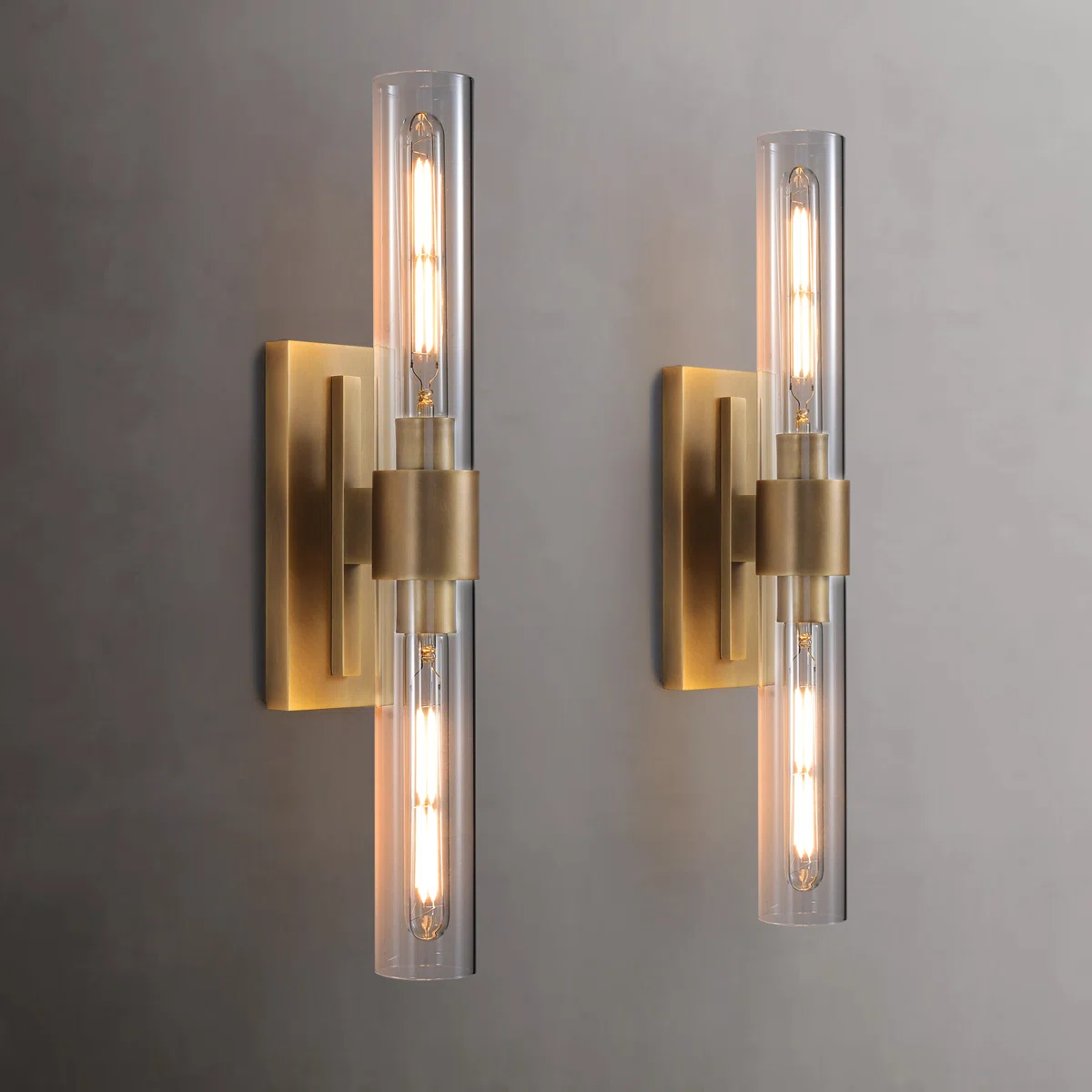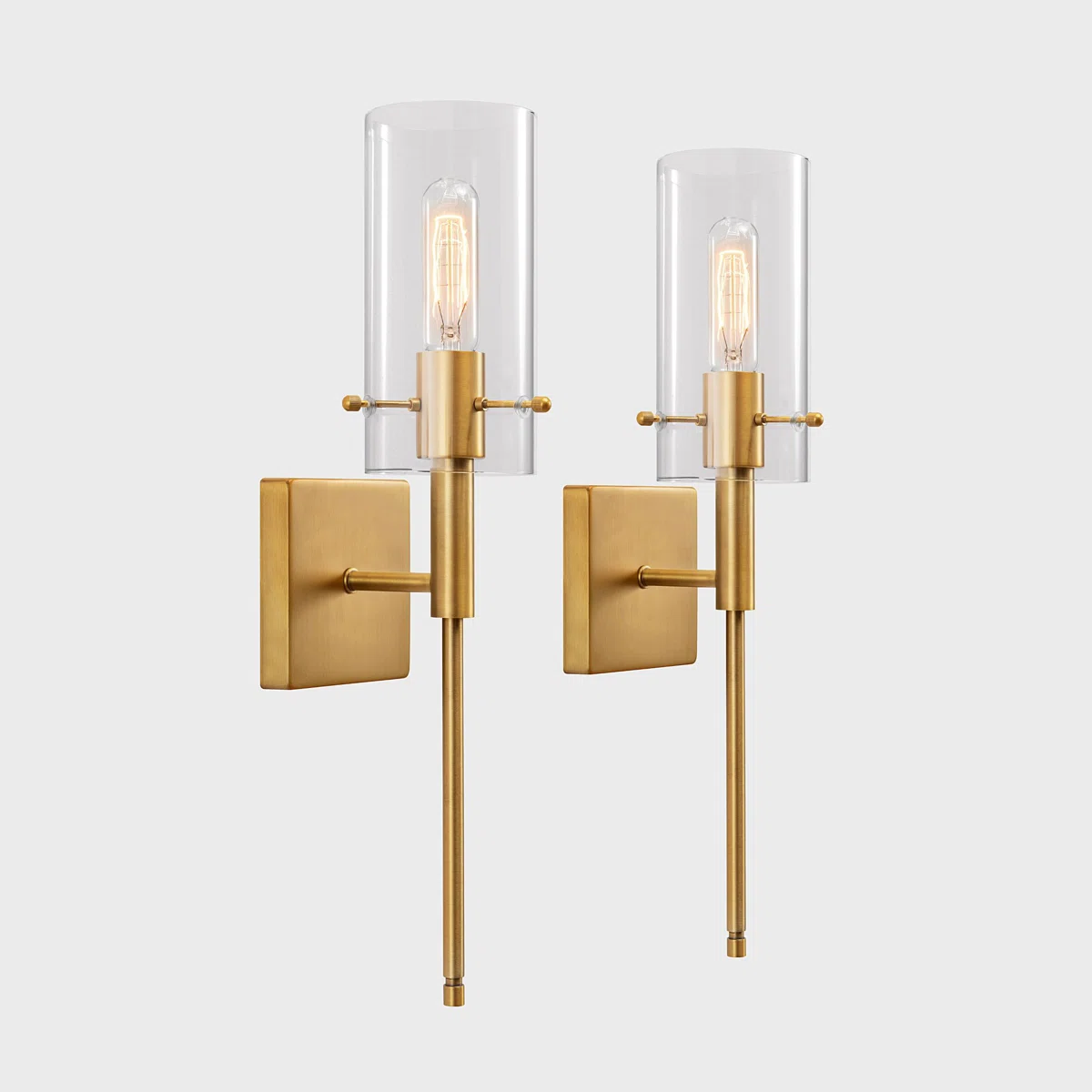Design Trends for a Modern Luxury Transitional Home
- Danielle Nicole Enright
- Oct 22
- 4 min read
Updated: Oct 26
When Luxury Meets Livable
I’ve always believed the most beautiful homes are the ones that breathe. You walk in and instantly exhale. The air feels softer, the palette calmer, the materials grounded. That’s the heart of a modern luxury transitional home. It’s not about perfection; it’s about presence.

Luxury isn’t shiny. It’s subtle. It’s the way natural light hits a white oak beam at 4 PM. It’s how a linen curtain sways just enough to remind you that air and texture matter. It’s the difference between decorating a house and designing a feeling. If you're confused as to how to attempt to design your home, first ask yourself this question: how do you want your guests to feel when they enter your home? How do you want to feel when you live in your home?
Of course, everyone may have a completely different answer, which is why there are so many interior design styles and why some find it extremely confusing a maybe why you’re here reading my blog. If you want more info on each style click the link below:
My personal answer to these questions is that I want my guests to feel warm, cozy, light, airy, but I also want them to feel wowed by some of the architectural details and maybe even say, "did you see her massive island?". I want to feel organized, relaxed, serene.
If you answered something similar, I'm guessing that you like a transitional style home with some wood accents, a neutral color palette with some high-interest focal points, like marble, concrete, tile, moulding and stone. Because you like to feel organized, relaxed, and serene you definitely aren't a maximalist (but there's also nothing wrong with that)! You are simply more of an minimalist and you like your home to have everything in its place or else you likely feel a sense of anxiety when your surroundings are too cluttered. I’m absolutely speaking about myself here!
Scroll through this slideshow to view photos from my home.
1. Layered Neutrals That Feel Anything But Boring
White-on-white had its moment, but going into 2026, it’s all about depth. Think warm neutrals: stone, sand, oatmeal, and mushroom layered with soft whites and earthy undertones. I like to call it “quiet confidence”; the kind of palette that whispers elegance instead of shouting for attention.
To achieve it: mix materials, not just colors. Pair smooth plaster walls with oak floors, woven throws with ceramic decor, and matte finishes with subtle sheen. Texture is your best friend here.

2. White Oak: The Unsung Hero of Transitional Design
If there’s a single material that defines modern organic luxury, it’s white oak. It’s timeless, warm, and sophisticated without trying too hard. Use it on floors, cabinetry, beams, or even ceilings. It brings the kind of natural texture that balances modern lines with organic warmth.
My rule? If it feels like it could exist in nature, it probably belongs in your home.


3. Plaster & Limewash: Imperfection as Art
The rise of limewash walls and plaster finishes is a quiet rebellion against everything overly polished. These materials age beautifully, telling a story through subtle movement and texture. They create walls that live: soft, matte, and touchable. Perfect for a home that embraces organic imperfection.
Pro tip: pair limewash walls with clean architectural lines and contemporary fixtures for that perfect balance of old and new.

4. Statement Lighting That Doubles as Sculpture
Lighting isn’t just functional anymore and ‘boob’ lights? Buh-bye. Lighting is the jewelry of your home. Choose statement lighting that feels like art: sculptural chandeliers, glass pendants, mixed metals, or natural woven textures. Each fixture should make you pause, even if just for a moment, and say, “Yes…that’s feelEnright” (see what I did there?)
5. Soft Contrast & Earthy Accents
Modern transitional design thrives on restraint. You don’t need harsh contrasts; you need harmony. Mix warm metals (brushed brass, aged bronze) with cool stone tones. Add greenery, clay vases, or soft black accents for depth. It’s that blend of grounded and elevated, hard and soft, like pairing vintage jeans with a silk blouse. Casual meets couture.
6. Natural Light, Unfiltered
There’s a reason every luxury designer chases light.
It’s not just illumination, it’s atmosphere. Maximize natural light with sheer window treatments, wider trims, and layered mirrors. A room that glows softly at golden hour? That’s timeless design.

7. Spaces That Tell Your Story
The most luxurious thing you can add to a home isn’t marble, it’s meaning (although I’m a big fan of marble too)! Display a piece of driftwood from your favorite beach. Frame your child’s messy art. Let your books, travel finds, DIY pieces and family photos live side-by-side with high-end finishes. That’s the secret to making a home both luxury and livable; it’s not curated to death. It’s collected with heart.

Final Thoughts
Trends will always shift (my shiplap that I installed 2 years ago above is already being labeled "dated"), but soul never goes out of style. If your home feels calm, connected, and deeply you, then it’s timeless no matter what Pinterest or that interior designer on Instagram says next year. So take a deep breath, trust your eye but mostly your heart, and design something that keeps you feelEnright at home.
What’s your interior design style?
0%Modern
0%Eclectic / Maximalist
0%Earthy Organic
0%Modern Farmhouse
You can vote for more than one answer.
Tags:
modern luxury transitional home / organic modern home design / timeless design trends / white oak interiors / limewash walls / modern organic decor / luxury home inspiration / transitional interior style / modern classic home / designer homes / modern farmhouse / modern home decor / home inspo / home blog / how to style my home / how to decorate



















































Comments